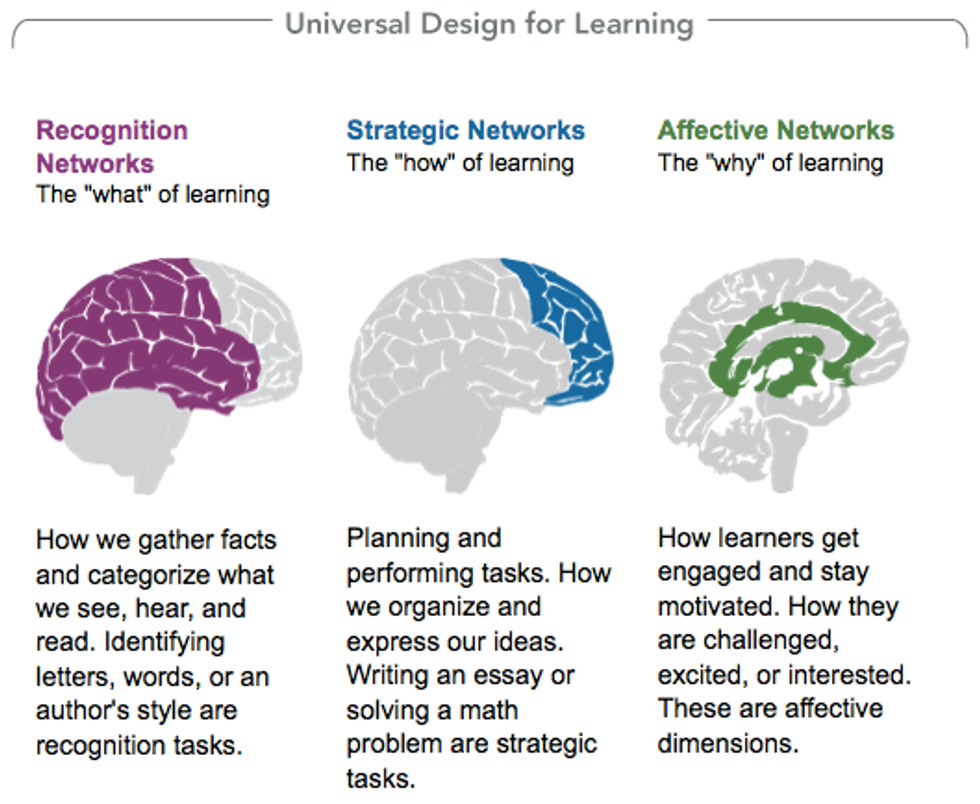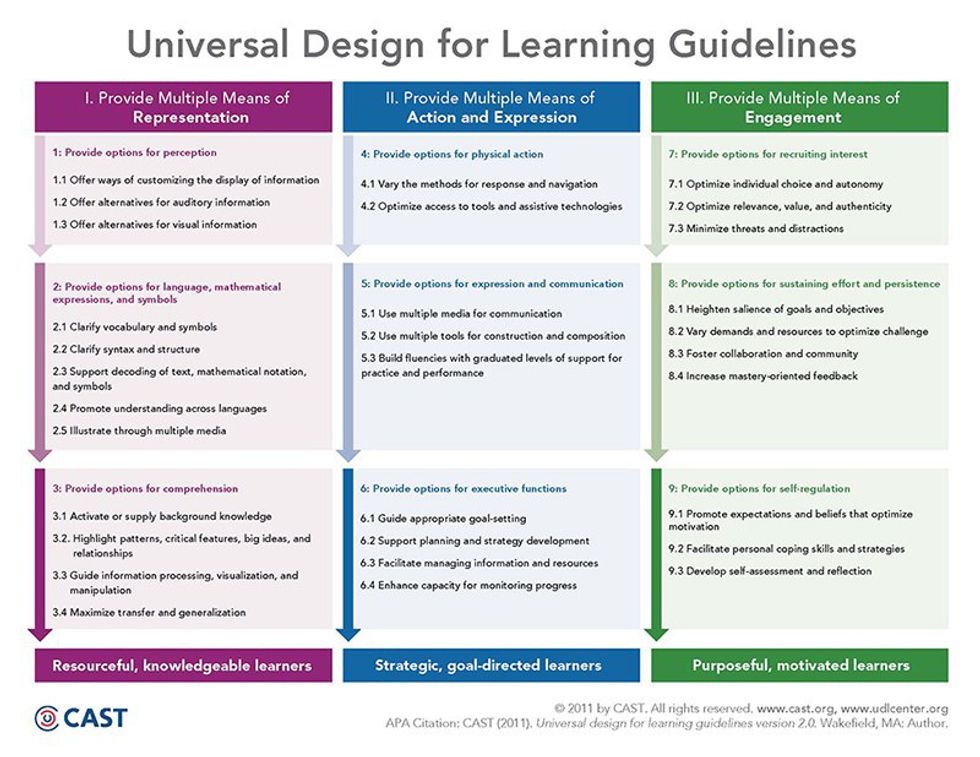UDL 101: The basics of Universal Design for Learning. Universal Design for Learning is a framework for designing and delivering instruction. UDL is based on the three networks of the brain associated with learning: the Recognition Network, the Strategic Network, and the Affective Network (CAST 2012).
Learning is not something an individual does. Learning is not "sitting still, paying attention, and inputting information." Modern neuroscience now reveals to us that "learning occurs in a dynamic interaction between student and learning environment, and that the learning environment — or context — is itself complex and dynamic (Meyer, Rose, & Rose pg.11). Universal Design for Learning is a framework that allows one to consider this interaction, account for student variability, and remove barriers to learning in the the learning environment.
The framework of UDL is comprised of three principles based on the networks of the brain associated with learning: representation or the what of learning, action and expression or the how of learning and engagement or the why of learning (CAST 2012). There are nine subsequent guidelines organized around the three principle of UDL: (I) Provide multiple means of representation; (II) provide multiple means of action and expression; and (III) provide multiple means of engagement” (Rose & Meyer, 2002).
Let's deconstruct them a bit!
The principle of representation or the what of learning based on the recognition network is where students need to be given learning opportunities to be knowledgeable and resourceful learners. Here the educator can employ the principle of representation and examine and evaluate the curriculum and learning environment in order to provide students with options for perception, options for language, mathematical expressions, & symbols, and options for perception.
The principle of action and expression or the how of learning based on the strategic network is where students need to be given learning experiences where they can become strategic and goal-directed learners. Here the educator can utilize the principle of action and expression to design learning that provides options for physical action, options for expression and communication and options for executive function.
Finally, the principle of engagement or the why of learning based on the affective network is where students need learning environments that provide them with support and opportunities to be purposeful and motivated learners. Here the educator can better attend to the dynamic interaction between the learner and the context of the learning environment by providing options for recruiting interest, options for sustaining effort and persistence and options for self-regulation. CAST's guidelines and principles are depicted in the figure below as well.
CAST, Inc. (2012) Retrieved from: http://www.udlcenter.org/aboutudl/whatisudl
Meyer, A., Rose, H. D., Gordon, D. (2014). Universal design for learning, theory andpractice. Wakefield, MA: CAST Professional Publishing.
Rose, D., & Meyer, A. (2002) Teaching every student in the digital age: universal design for learning. Alexandrea, VA: Association of Supervision and Curriculum Development.





















